John F. Sevic
Visit to download the full and correct content document: https://ebookmass.com/product/the-load-pull-method-of-rf-and-microwave-power-amp lifier-design-john-f-sevic/
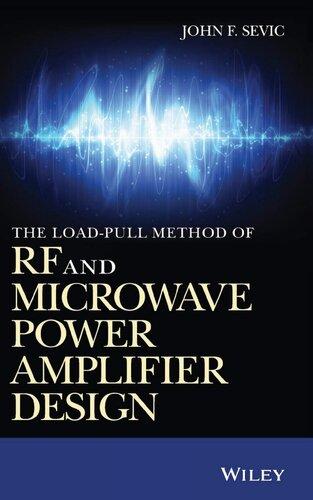
More products digital (pdf, epub, mobi) instant download maybe you interests ...

The load-pull method of RF and microwave power amplifier design 1st Edition John Sevic
https://ebookmass.com/product/the-load-pull-method-of-rf-andmicrowave-power-amplifier-design-1st-edition-john-sevic/

RF and Microwave Circuit Design: Theory and Applications Charles E. Free
https://ebookmass.com/product/rf-and-microwave-circuit-designtheory-and-applications-charles-e-free/

High Power Microwave Sources and Technologies Using Metamaterials 1st Edition John W. Luginsland (Editor)
https://ebookmass.com/product/high-power-microwave-sources-andtechnologies-using-metamaterials-1st-edition-john-w-luginslandeditor/
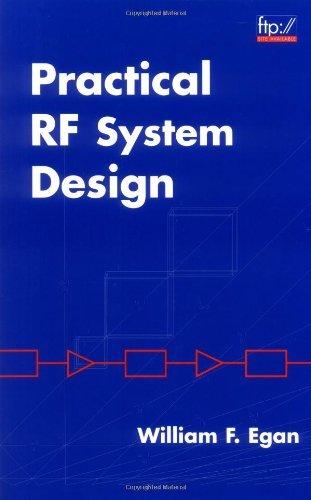
Practical RF System Design (Wiley – IEEE) – Ebook PDF
Version
https://ebookmass.com/product/practical-rf-system-design-wileyieee-ebook-pdf-version/
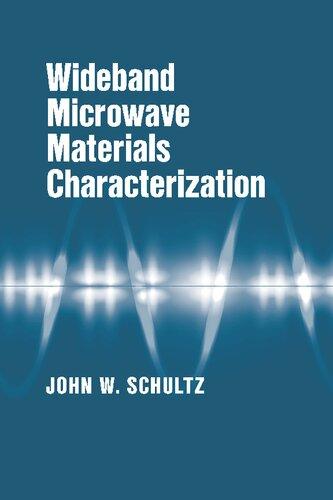
Wideband Microwave Materials Characterization John W. Schultz
https://ebookmass.com/product/wideband-microwave-materialscharacterization-john-w-schultz/

F**k It ( Fuck It ) : The Ultimate Spiritual Way ( Another version of Lester Levenson Sedona Method ) John C Parkin
https://ebookmass.com/product/fk-it-fuck-it-the-ultimatespiritual-way-another-version-of-lester-levenson-sedona-methodjohn-c-parkin/

The Power Of The Cross John Bradshaw
https://ebookmass.com/product/the-power-of-the-cross-johnbradshaw/

DYNAMICS OF THE STANDARD MODEL John F. Donoghue
https://ebookmass.com/product/dynamics-of-the-standard-modeljohn-f-donoghue/
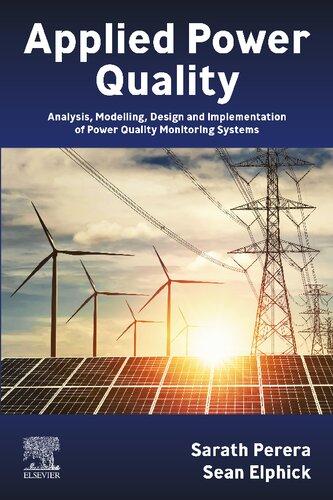
Applied Power Quality: Analysis, Modelling, Design and Implementation of Power Quality Monitoring Systems Sarath Perera
https://ebookmass.com/product/applied-power-quality-analysismodelling-design-and-implementation-of-power-quality-monitoringsystems-sarath-perera/
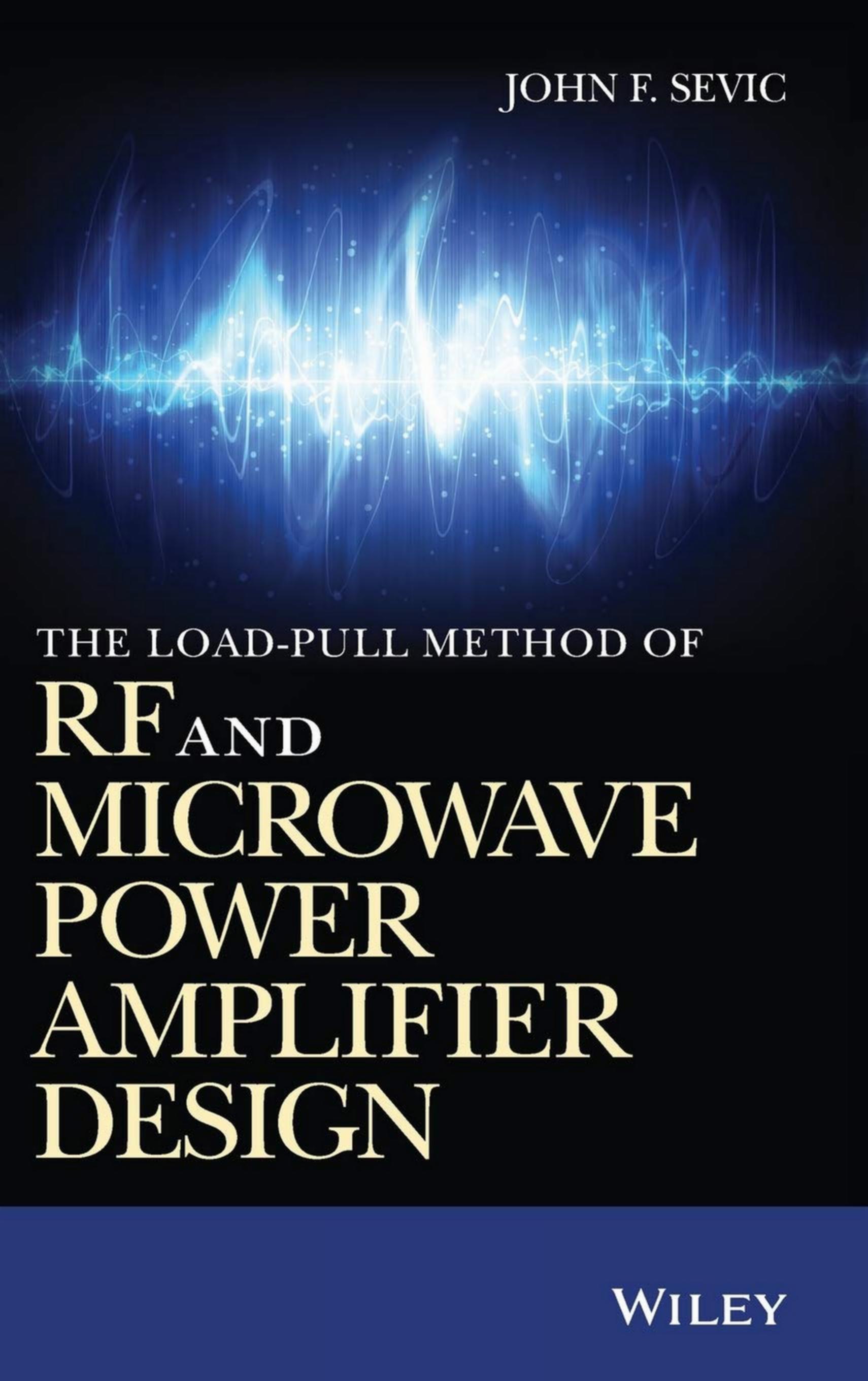
JohnF.Sevic,Ph.D.
Thiseditionfirstpublished2020 ©2020JohnWiley&Sons,Inc.
Allrightsreserved.Nopartofthispublicationmaybereproduced,storedinaretrievalsystem,or transmitted,inanyformorbyanymeans,electronic,mechanical,photocopying,recordingor otherwise,exceptaspermittedbylaw.Adviceonhowtoobtainpermissiontoreusematerialfromthis titleisavailableathttp://www.wiley.com/go/permissions.
TherightofJohnF.Sevictobeidentifiedastheauthorofthisworkhasbeenassertedinaccordance withlaw.
RegisteredOffice
JohnWiley&Sons,Inc.,111RiverStreet,Hoboken,NJ07030,USA
EditorialOffice 111RiverStreet,Hoboken,NJ07030,USA
Fordetailsofourglobaleditorialoffices,customerservices,andmoreinformationaboutWiley productsvisitusatwww.wiley.com.
Wileyalsopublishesitsbooksinavarietyofelectronicformatsandbyprint-on-demand.Somecontent thatappearsinstandardprintversionsofthisbookmaynotbeavailableinotherformats.
LimitofLiability/DisclaimerofWarranty
Whilethepublisherandauthorshaveusedtheirbesteffortsinpreparingthiswork,theymakeno representationsorwarrantieswithrespecttotheaccuracyorcompletenessofthecontentsofthiswork andspecificallydisclaimallwarranties,includingwithoutlimitationanyimpliedwarrantiesof merchantabilityorfitnessforaparticularpurpose.Nowarrantymaybecreatedorextendedbysales representatives,writtensalesmaterialsorpromotionalstatementsforthiswork.Thefactthatan organization,website,orproductisreferredtointhisworkasacitationand/orpotentialsourceof furtherinformationdoesnotmeanthatthepublisherandauthorsendorsetheinformationorservices theorganization,website,orproductmayprovideorrecommendationsitmaymake.Thisworkissold withtheunderstandingthatthepublisherisnotengagedinrenderingprofessionalservices.The adviceandstrategiescontainedhereinmaynotbesuitableforyoursituation.Youshouldconsultwith aspecialistwhereappropriate.Further,readersshouldbeawarethatwebsiteslistedinthisworkmay havechangedordisappearedbetweenwhenthisworkwaswrittenandwhenitisread.Neitherthe publishernorauthorsshallbeliableforanylossofprofitoranyothercommercialdamages,including butnotlimitedtospecial,incidental,consequential,orotherdamages.
LibraryofCongressCataloging-in-PublicationData
Names:Sevic,JohnF.,author.
Title:Theload-pullmethodofRFandmicrowavepoweramplifierdesign/ JohnF.Sevic,VicePresidentofMillimeter-WaveEngineering,MajaSystems, Milpitas,CA.
Description:Firstedition.|Hoboken,NJ:JohnWiley&Sons,Inc.,2020. |Includesindex.
Identifiers:LCCN2020009983(print)|LCCN2020009984(ebook)|ISBN 9781118898178(hardback)|ISBN9781119078067(adobepdf)|ISBN 9781119078036(epub)
Subjects:LCSH:Poweramplifiers–Designandconstruction.|Amplifiers, Radiofrequency–Designandconstruction.|Microwaveamplifiers–Design andconstruction.
Classification:LCCTK7871.58.P6S452020(print)|LCCTK7871.58.P6 (ebook)|DDC621.3841/2–dc23
LCrecordavailableathttps://lccn.loc.gov/2020009983
LCebookrecordavailableathttps://lccn.loc.gov/2020009984
CoverDesign:Wiley
CoverImage:©Elesey/Shutterstock
Setin9.5/12.5ptSTIXTwoTextbySPiGlobal,Chennai,India
10987654321
Thisbookisdedicatedtothenextgenerationofload-pullexperts:mayyour experiencesbeasenrichingandrewarding.
Contents
ListofFigures xi
ListofTables xxi
Acronyms,Abbreviations,andNotation xxiii
Preface xxv
Foreword xxix
Biography xxxi
1HistoricalMethodsofRFPowerAmplifierDesign 1
1.1TheRFPowerAmplifier 1
1.2HistoryofRFPowerAmplifierDesignMethods 3
1.2.1CopperTapeandtheX-ActoKnife 4
1.2.2TheShuntStubTuner 4
1.2.3TheCrippsMethod 5
1.3TheLoad-PullMethodofRFPowerAmplifierDesign 5
1.3.1HistoryoftheLoad-PullMethod 6
1.3.2RFPowerAmplifierDesignwiththeLoad-PullMethod 8
1.4HistoricalLimitationsoftheLoad-PullMethod 9
1.4.1MinimumImpedanceRange 10
1.4.2IndependentHarmonicTuning 11
1.4.3PeakandRMSPowerCapability 12
1.4.4OperatingandModulationBandwidth 12
1.4.5LinearityImpairment 13
1.4.6RigorousErrorAnalysis 14
1.4.7AcousticallyInducedVibrations 14
1.5ClosingRemarks 15 References 15
2AutomatedImpedanceSynthesis 17
2.1MethodsofAutomatedImpedanceSynthesis 18
2.1.1PassiveElectromechanicalImpedanceSynthesis 18
2.1.2TheActive-LoopMethodofImpedanceSynthesis 21
2.1.3TheActive-InjectionMethodofImpedanceSynthesis 24
2.2UnderstandingElectromechanicalTunerPerformance 26
2.2.1ImpedanceSynthesisRange 26
2.2.2OperatingBandwidth 27
2.2.3ModulationBandwidth 29
2.2.4TunerInsertionLoss 31
2.2.5PowerCapability 32
2.2.6VectorRepeatability 34
2.2.7ImpedanceStateResolutionandUniformity 35
2.2.8FactorsInfluencingTunerSpeed 36
2.2.9TheSlab-LinetoCoaxialTransition 37
2.3AdvancedConsiderationsinImpedanceSynthesis 37
2.3.1IndependentHarmonicImpedanceSynthesis 37
2.3.2Sub-1 Ω ImpedanceSynthesis 41
2.4ClosingRemarks 43 References 43
3Load-PullSystemArchitectureandVerification 45
3.1Load-PullSystemArchitecture 46
3.1.1Load-PullSystemBlockDiagram 46
3.1.2SourceandLoadBlocks 48
3.1.3SignalSynthesisandAnalysis 52
3.1.4Large-SignalInputImpedanceMeasurement 53
3.1.5AM–AM,AM–PM,andIMPhaseMeasurement 53
3.1.6DynamicRangeOptimization 54
3.2TheDCPowerSource 54
3.2.1ChargeStorage,Memory,andVideoBandwidth 55
3.2.2Load-PullofTruePAE 56
3.2.3TheEffectofDCBiasNetworkLoss 57
3.3The ΔGT MethodofSystemVerification 57
3.4ElectromechanicalTunerCalibration 60
3.5ClosingRemarks 60 References 61
4Load-PullDataAcquisitionandContourGeneration 63
4.1ConstantSourcePowerLoad-Pull 64
4.1.1Load-PullwithaSingleSetofContours 65
4.1.2Load-PullwithTwoorMoreSetsofContours 69
4.1.3Load-PullforSignalQualityOptimization 73
4.1.4Large-SignalInputImpedance 76
4.2Fixed-ParametricLoad-Pull 77
4.2.1FixedLoadPower 77
4.2.2FixedGainCompression 79
4.2.3FixedPeak–AverageRatio 79
4.2.4FixedSignalQuality 80
4.2.5TreatingMultipleContourIntersections 81
4.3HarmonicLoad-Pull 82
4.3.1SecondHarmonicLoad-Pull 83
4.3.2Third-HarmonicLoad-Pull 85
4.3.3Higher-OrderEffectsandInter-harmonicCoupling 85
4.3.4BasebandLoad-PullforVideoBandwidthOptimization 85
4.4SweptLoad-Pull 87
4.4.1SweptAvailableSourcePower 87
4.4.2SweptBias 88
4.4.3SweptFrequency 88
4.5AdvancedTechniquesofDataAcquisition 88
4.5.1SimplifiedGeometric-LogicalSearch 89
4.5.2SyntheticGeometric-LogicalSearch 89
4.5.3MultidimensionalLoad-PullandDataSlicing 91
4.5.4Min–MaxPeakSearching 93
4.6ClosingRemarks 94 References 95
5OptimumImpedanceIdentification 97
5.1PhysicalInterpretationoftheOptimumImpedance 97
5.2TheOptimumImpedanceTrajectory 99
5.2.1OptimalityCondition 99
5.2.2UniquenessCondition 100
5.2.3TerminatingImpedance 100
5.3GraphicalExtractionoftheOptimumImpedance 101
5.3.1OptimumImpedanceStateExtraction 101
5.3.2OptimumImpedanceTrajectoryExtraction 102
5.3.3TreatmentofOrthogonalContours 104
5.4OptimumImpedanceExtractionfromLoad-PullContours 105
5.4.1SimultaneousAverageLoadPowerandPAE 106
5.4.2SimultaneousAverageLoadPower,PAE,andSignalQuality 107
5.4.3OptimumImpedanceExtractionUnderFixed-Parametric Load-Pull 108
x Contents
5.4.4PAEandSignalQualityExtractionUnderConstantAverageLoad Power 109
5.4.5OptimumImpedanceExtractionwithBandwidthasaConstraint 110
5.4.6ExtensiontoSource-Pull 112
5.4.7ExtensiontoHarmonicandBase-BandLoad-Pull 112
5.5ClosingRemarks 112
6MatchingNetworkDesignwithLoad-PullData 115
6.1SpecificationofMatchingNetworkPerformance 116
6.2TheButterworthImpedanceMatchingNetwork 116
6.2.1TheButterworth L-SectionPrototype 117
6.2.2AnalyticalSolutionoftheButterworthMatchingNetwork 119
6.2.3GraphicalSolutionoftheButterworthMatchingNetwork 120
6.3PhysicalImplementationoftheButterworthMatchingNetwork 121
6.3.1TheLumped-ParameterButterworthMatchingNetwork 122
6.3.2TheDistributed-ParameterButterworthMatchingNetwork 124
6.3.3TheHybrid-ParameterButterworthMatchingNetwork 126
6.4SupplementalMatchingNetworkResponses 130
6.4.1TheChebyshevResponse 131
6.4.2TheHeckenandKlopfensteinResponses 131
6.4.3TheBessel–ThompsonResponse 135
6.5MatchingNetworkLoss 135
6.5.1DefinitionofMatchingNetworkLoss 135
6.5.2TheEffectsofMatchingNetworkLoss 136
6.5.3MinimizingMatchingNetworkLoss 137
6.6OptimumHarmonicTerminationDesign 138
6.6.1OptimallyEngineeredWaveforms 138
6.6.2PhysicalImplementationofOptimumHarmonicTerminations 140
6.6.3OptimumHarmonicTerminationsinPractice 141
6.7ClosingRemarks 142 References 143
Index 145
ListofFigures
Figure1.1 Contemporarymicrowavetunerspanning2.5–50GHzoperating bandwidth.Source:ReproducedwithpermissionofFocus Microwaves,Inc. 7
Figure1.2 Contemporarymicrowavetunerspanning600MHzto18.0GHz operatingbandwidth.Source:Reproducedwithpermissionof MauryMicrowave,Inc. 7
Figure1.3 Blockdiagramofagenericload-pullsystemillustratingkey impedancedefinitions. 9
Figure2.1 Transversesectionviewofelectromechanicaltunerslab-line illustratingprobeplacementanditsdisplacementforsynthesisof anarbitraryimpedance.Tofirst-order,probedisplacementfrom thecenterconductor(alongthe y-axis)representsthemagnitude ofthereflectioncoefficientanditslongitudinaldisplacement (alongthe z-axis)fromanarbitraryreference-plane,usuallythe physicalendofthetunernearesttheDUT,representsphase. 18
Figure2.2 Typicalprobeusedinthepassiveelectromechanicaltuner.Each square-gridrepresents1cm.Source:Reproducedwithpermission ofFocusMicrowaves,Inc. 19
Figure2.3 Reflectioncoefficientvectorseenattunercalibration reference-planeillustratingrelationshipbetweenprobe displacementandcarriagedisplacementandassociated magnitudeandphase. 19
Figure2.4 Internalviewofamodernelectromechanicaltunerwiththree carriages.Amulti-probetunerofthisstyleiscapableof independentfundamentalandharmonicimpedancesynthesis,as wellasfrequency-agiledynamicpre-matching.Source: ReproducedwithpermissionofFocusMicrowaves,Inc. 20
Figure2.5 FundamentalreferencePApowercapabilitynormalizedby expectedDUTPEPcapabilityversusrequiredsyntheticload impedanceatDUTreference-planeforactive-loop.Thefour trajectoriesillustrate0–3dBinsertionloss,in1dBsteps. 21
Figure2.6 Thefundamentalfeed-forwardactive-loopimpedancesynthesis architecture,duetoTakayama,andoftenreferredtoasthe split-signalmethod[1]. 22
Figure2.7 Thefundamentalfeed-backactive-loopimpedancesynthesis architecture. 23
Figure2.8 Modernactive-loopload-pullsystemcapableofsimultaneous fundamental,harmonic,andbasebandcharacterization.Source: ReproducedwithpermissionofMauryMicrowave,Inc. 23
Figure2.9 Thefundamentalactive-injectionimpedancesynthesis architecture. 24
Figure2.10 FundamentalreferencePApowercapabilitynormalizedby expectedDUTPEPcapabilityversusrequiredsyntheticload impedanceatDUTreference-planeforactiveinjection.Thenine trajectoriesillustratepassivepre-matchingfrom0.1to0.9,in0.1 steps. 24
Figure2.11 FundamentalreferencePApowercapabilitynormalizedby expectedDUTPEPcapabilityversusrequiredsyntheticreflection coefficientmagnitudeatDUTreference-planeforactive-injection impedancesynthesis.Insertionlossbetweentheactive-injection reference-planeandtheDUTreference-planeisassumedtobe 2.0dB,withtheinitialtrajectorysetfor0magnitudepre-match andeachsubsequenttrajectoryanincreaseof0.1upto0.9.The reflectioncoefficientisnormalizedto50 Ω 25
Figure2.12 Modernhigh-performancevectornetworkanalyzerwithfour portsandtime-domaincapability.Source:Reproducedwith permissionofKeysight,Inc. 26
Figure2.13 Typicaldual-carriagetuner VSWR responseversusfrequency, illustratingoperatingbandwidthandcrossoverfrequency,inthis examplebeing4GHz.Theoperatingbandwidthislimitedto approximately9GHzinthisexample,illustratedbythe15:1 VSWR at10GHz. 28
Figure2.14 Phaseresponseoftunerinputimpedancearounditsnominal centerfrequencyillustratingphasenonlinearityrepresentativeof nonconstantgroupdelaythatinducesIMandACPRasymmetry.
ListofFigures xiii
Thedashedlineistangenttotheapproximatelyconstantgroup delayregion,whichisafunctionoftuner VSWR 30
Figure2.15 Tuneravailable(heating)lossindBversusthemagnitudeofthe reflectioncoefficientforthesidefacingtheDUT. 31
Figure2.16 ConfigurationtoevaluatemaximumtunerRMSpowercapability foraspecifiedchangeintunerimpedanceduetoself-heating. Tunerimpedance Rmin referstolowestimpedancestateofeach tuner,asdefinedinFigure2.3. 33
Figure2.17 Graphicalillustrationoftunervectorrepeatability. 35
Figure2.18 Two-portrepresentationoftwocarriage–probepairscascadedon asharedtransmission-line,similartotheconfigurationillustrated byFigure1.1. 38
Figure2.19 Fundamentalandharmonicimpedancevectors, Γ1 and Γ2 , respectively,andthe �� ej�� vectorsweepingouttheconstraintcircle at ��1 .Thecircleisshownseveralordersofmagnitudelargerthan itstypicalradiustoillustrateitslocationon Γ1 . 40
Figure2.20 Fundamentalandharmonicimpedancevectors, Γ1 and Γ2 , respectively,andthe �� ej�� vectorsweepingouttheconstraintcircle at ��1 .Thecircleisshownseveralordersofmagnitudelargerthan itstypicalradiustoillustrateitslocationon Γ1 .Thedashedlines showthecorrespondencebetweenthefundamentalstatesonthe interiorof �� ej�� andthesecond-harmonicstatesontheboundary oftheSmithchart.Thisexpansionarymappingprocess,dueto frequencydispersion,isthebasisofthemulti-probemethodof harmonicload-pullwithelectromechanicaltuners. 41
Figure2.21 Gammamagnitudeattheprobe-tipreferenceversustuner VSWR forprobeinsertionlossfrom0to2.0dBin0.2dBincrements. 42
Figure3.1 Contemporaryhigh-performanceon-waferload-pullsystem. Source:ReproducedwithpermissionofMauryMicrowave, Inc. 46
Figure3.2 Genericload-pullsystemillustratingvariousfunctionalblocks andtheirlocationwithintheoverallarchitecture. 47
Figure3.3 SmithchartillustratingvectordependenceofDUTsource impedanceonsourcetuner,thesourceblock,andthesource terminatingimpedance,composedofthesignalsourceand possiblyareferencePA. 49
Figure3.4 ApparentPAEversustotalharmoniccontentwithrespectto fundamentalpowerparametrizedtoactualPAEtoassess optimumlow-passfilteringrequirements. 50
Figure3.5 Voltageandcurrentconventionsthatdefinethelarge-signalinput impedanceofatransistor,ataspecificfrequency,usuallythe fundamental. 53
Figure3.6 TypicaldynamicrangecurveforIMandACPRmeasurements illustratingnoise-limitedandlinearity-limitedboundaries.The regionbetweenthesetwoboundariesestablishesthedynamic rangeofIMandACPRcharacterization. 55
Figure3.7 Responsetoatwo-tonestimulusillustratingacommondefinition ofvideobandwidth(VBW)whenthetonespacingyields2∘ of asymmetryinthethird-ordermixingproducts.Notethatthe lowersidebandleadsinphaseandtheuppersidebandlagsin phasewithrespecttothelinearphaseresponseshown.Itisthis factthatproducesintermodulationasymmetry,asdescribedby SevicandSteer[4]. 56
Figure3.8 Load-pullsystemconfigurationtoevaluate ΔGT . 58
Figure3.9 Typical ΔGT responseforawell-calibratedsub-1 Ω high-power 2GHzload-pullsystemwithquarter-wavepre-matching[10]. 59
Figure4.1 Canonicalload-pullsystemdefiningindependentvariablesfrom whichallmeasurementdataarederived.DCconditionsatthe drain(collector)andgate(base)formthebasisofDCpowerfor efficiencycalculations.Forthepresentload-pullmethodthat transistoroutputimpedanceanditsavailablepowerneednotbe knownnordefined. 64
Figure4.2 Loadpowercontoursillustratingthemaximumpower impedance,contourclosure,andtheimpedance-stategridfor dataacquisition.Thelargedashedconcentriccircleattheedgeof theSmithchartboundaryisthemaximum VSWR thetunercan developwhilethepartialdashedcirclenearthetopoftheSmith chartistheloadstabilitycircleattheload-pullfrequency. 66
Figure4.3 Threeiterationsof(a)load-pulland(b)source-pullcontours illustratingconvergencetomaximumpowerandgain.Thefirst iterationisbasedonCrippsestimate,shownasasquare,also illustratingtheimpedancestatesdidnotresolvepowerandgain maxima,thusexhibitingopencontours.Subsequentexpansionof theimpedancestatesforbothload-pullandsource-pullenabled powerandgainmaximatobeuniquelyresolved. 67
Figure4.4 Transducergainversusloadpowerforeachofthethreeload-pull iterationsofFigure4.3.Asconvergenceisachievedforoptimum
Figure4.5
ListofFigures xv loadandsourceimpedance,bothmaximumpowerandgain increase. 68
Loadpower(solidcontours)andPAE(dashedcontours)contours illustratingthemaximumpowerandPAEimpedances,contour closure,andtheimpedance-stategridfordataacquisition.The largedashedconcentriccircleattheedgeoftheSmithchart boundaryisthemaximum VSWR thetunercandevelopwhilethe partialdashedcirclenearthetopoftheSmithchartistheload stabilitycircleattheload-pullfrequency.TheXsymbolillustrates apossibletrade-offpointformaximumPAEforagivenpower,at afixedfrequency. 70
Figure4.6
Threeiterationsof(a)load-pulland(b)source-pullcontoursfor loadpowerandPAEillustratingconvergencetomaximumpower, gain,andPAE.ThefirstiterationisbasedonCrippsestimate, shownasasquare,alsoillustratingtheimpedancestatesdidnot resolvepowerandgainmaxima,thusexhibitingopencontours. Subsequentexpansionoftheimpedancestatesforbothload-pull andsource-pullenabledpower,gain,andPAEmaximatobe uniquelyresolved.TheXsymbolillustratesapossibletrade-off pointformaximumPAEforagivenpower,atafixed frequency. 71
Figure4.7 Loadpower(solidcontours),PAE(dashedcontours),andACPR (solidlines)contoursillustratingthemaximumpowerandPAE impedances,ACPRcontours,contourclosure,andthe impedance-stategridfordataacquisition.Thelargedashed concentriccircleattheedgeoftheSmithchartboundaryisthe maximum VSWR thetunercandevelopwhilethepartialdashed circlenearthetopoftheSmithchartistheloadstabilitycircleat theload-pullfrequency. 74
Figure4.8
Twoiterationsof(a)load-pulland(b)source-pullcontoursfor loadpower(solidcontours),PAE(dashedcontours),andsignal quality(dottedcontours)illustratingconvergencetooptimum simultaneouspower,gain,PAE,andsignalquality.Theinitial source-pullcoverstheentireSmithcharttoquicklyidentify trendsinoptimumsignalquality.Notefromthefirstiterationthat maximumtransducergainandmaximumsignalquality,e.g. minimumACPR,aresubstantiallydisplaced. 75
Figure4.9 GenericmultistagePAline-upillustratinginterstagematching networkandrelevantimpedancedefinitions. 76
Figure4.10 Illustrationofregionsrequiringspecialattentionduringfixedload powerfromanother,withthegrayannularringrepresentativeof highavailablelossandthesecondgrayregionthelocationof relativelyhighimpedancesthatcaninduceprematuresaturation andsubsequentlylowerpowercapability. 78
Figure4.11 Contoursofloadpower,PAE,andpeak–averageratio.Notethe phenomenaofmultiplemaxima,illustratingtheneedforfixed peak–averageratioload-pulltobeprecededbyfixedavailable sourcepowerload-pulltoassistinidentificationofanappropriate loadpowerandPAEstationarypointtoperformfixed peak–averageratioload-pull.Thecircularregioningrayis identifiedastheregionforfixedpeak–averageratiosinceit enclosestheloadpowerandPAEstationarypointandwhile providingalocallyuniquesolution. 80
Figure4.12 Illustrationofmultiplecontourintersectionsandtheir interpretation. 81
Figure4.13 Commonimpedancestatedistributionforharmonicload-pull exploringoptimumPAE.Ausualdistributionwouldbe36or72 states,yieldingaphasestepof10∘ or5∘ ,respectively.The VSWR forharmonicload-pullwillusuallybethemaximum VSWR the tuneriscapableofproducing,asshownbythevector. 84
Figure4.14 PAE versussecondharmonicphaseforfixedavailablesource power(dashedline)andfixedloadpower(solidline). 84
Figure4.15 VectorIMdiagramillustratinghowthebasebandimpedance influencesin-bandlinearity.Maximizingvideobandwidthpushes outanyresonancesofthebiasnetworkthatexpandsthelengthof thesecond-orderIMvector,whereasoptimizationusingbaseband load-pullsystematicallyseeksoutanimpedanceantiparallelto thevectorsumoftheothertwomixingproductvectors.(a)Phase responsedeviation,(b)asymmetricintermodulationproducts,(c) upperIMvectordiagram,and(d)lowerIMvectordiagram. 86
Figure4.16 Illustrationofgeometric-logicalsearchmethodshowingthe boundarywherePAEandACPRconstraintsaresatisfied simultaneouslyforfixedloadpowerandfixedfrequency.The ellipticaldashedlinesarecontoursofconstant Q,usedlater. 90
Figure4.17 Illustrationofthesyntheticgeometric-logicalsearchmethod showingthreeregionswherePAEandACPRconstraintsare satisfied,representinglow-band,mid-band,andhigh-band.The tolerancebandforeachparametermustgenerallybesmallerthan
Figure4.18
ListofFigures xvii
thegeometric-logicalsearchmethodtoapproximatealineversus region.Ablow-upisshowninthecircletoillustratethis,along withanapproximateimpedancetrajectory. 91
Illustrationofdata-structurecomposedofthreeindependent dimensionstoillustrateadatasliceforfixedavailablesource power. 92
Figure4.19 Illustrationofdata-structurecomposedofthreeindependent dimensionstoillustrateadatasliceforfixedfrequency. 93
Figure5.1 ThreedimensionalrenderingofaCWoptimumimpedance trajectoryillustratingthelinethatissimultaneouslymaximum foreachparameter.Notethatanydisplacementofftheoptimum trajectory,representedbythesequenceofimpedancestatesonthe surface,exceptinitsoptimaldirection,yieldsadecreaseinatleast oneoftheparameters. 98
Figure5.2 Graphicaldefinitionoftheoptimumimpedancetrajectory, illustratingitsdefinitionasthelineeverywhereorthogonaltothe tangentpointsofadjacentcontoursconnectingthetwoassociated optima.Theoptimumimpedancetrajectoryisthelinecomposed ofthesetofoptimumimpedancestatesbetweenthetwocontours, inthepresentexamplebeingloadpowerandPAE. 99
Figure5.3 Illustrationofgraphicaloptimumimpedancestateextraction, showingthetangentlineatthepointwheretwoparametric contoursaremutuallytangent. 101
Figure5.4 Load-pullcontoursfora10WGaNdevice,at1.9GHz,illustrating loadpowerandPAE. 102
Figure5.5 Rectangular-coordinateplotofaverageloadpowerversusPAE. Theunderlyingimpedancestatesattachedtotheconvexhullof thedatarepresentoftheoptimumimpedancetrajectorybetween maximumloadpowerandmaximumPAE,witheachstate representinganoptimumpointthatissimultaneouslymaximum loadpowerandmaximumPAE. 103
Figure5.6 Theoptimalimpedancetrajectoryofthe10WGaNHEMT describedbytheload-pullcontoursofFigure5.4.Notethatthis trajectoryindeeddescribestheoptimaltrade-offinloadpower andPAE,iseverywhereorthogonaltoeachcontour,and terminatesatmaximumloadpowerandPAE. 104
Figure5.7 Illustrationoftheconceptoforthogonalcontourswhereone parameterisheldapproximatelyfixedandtheotherisallowedto vary. 105
Figure5.8
Load-pullcontoursfora38dBmGSM-900DUTillustratingits optimumimpedancetrajectoryandtheoptimumimpedancestate at36dBmand75%PAE. 106
Figure5.9 Load-pullcontoursfora26dBmWCDMADUTillustratingits optimumimpedancetrajectoryandtheoptimumimpedancestate at24dBmand44%PAE,withapproximately 51dBc ACPR1. 107
Figure5.10 Instantaneoustransducergaintrajectoriesillustratingtransducer gainandgaincompressiondisplacementunderconstantavailable sourcepowerversusiterationofavailablesourcepowertofix transducergainandgaincompression. 108
Figure5.11 Load-pullcontoursfora26dBmWCDMADUT,underconstant averageloadpowerload-pull,illustratingitsoptimumimpedance trajectoryandtheoptimumimpedancestateat 50dBcACPR1 and48%PAE.Anincreaseof1dBinACPR1hasyieldeda substantial4%pointimprovementinPAE,from44%to48%,while reducingtheparameterspacefromthreetotwo. 109
Figure5.12 Expanded-scalegraphicalrepresentationofhigh-band,mid-band, andlow-bandoptimalimpedancetrajectories,witheachsquare denotingthedesiredoptimalimpedanceatitscorresponding frequency.Overfrequency,theconsolidatedcollectionof impedancestatesbecomestheoptimalimpedancetrajectoryover frequency,tobereplicatedbythematchingnetwork.Inpractice, thecollectionofoptimalimpedancestatesresembles Figure4.17. 111
Figure5.13 ExtensionofFigure5.12toillustratetheeffectofnarrow-band frequencyresponseusingaconstant-Q circleof Q = 1.5.Notethat theimpedancestatesontheexteriorofconstant-Q circlerequire proportionallyhighermatchingnetworkorderor,identically,a changeintransistorpowercapabilityortechnology.Theoptimal impedancestatesfallwithinthecapturerangeofamatching networkconstrainedbythe Q = 1.5circle,asillustrated. 111
Figure5.14 Contoursofconstantaverageloadpowerof43dBmfora400W PEPLDMOStransistorillustratingACLR1andPAEcontours superimposedover Q = 1.5and Q = 2.0circlesforbandwidth analysis. 112
Figure6.1 An N sectionmatchingnetworkwithoverallimpedance transformationratio T .Theimpedancetransformationratioof eachsectionis Tp .FortheButterworthmatchingnetwork, Tp of eachsectionisidentical,sothat T = T N p . 117
ListofFigures
Figure6.2 Low-passButterworth L-sectionmatchingprototype. 117
Figure6.3 ThefourcanonicalButterworth L-sectionmatchingsections basedonfrequencyresponseandtransformation.Thesoliddoton therealaxisisthegeometricmeanbetween RH and RL and representsthecharacteristicimpedanceofthequarter-waveline matchingthesetwoimpedances. 118
Figure6.4 Impedancedisplacementlociforconstructionofatwo-section Butterworthdistributed-parametermatchingnetworkwith Qo = 2.0.Notethatimpedances Z1 and Z2 arethegeometric meansoftheimpedancepairs R1 and Ra and Ra and R2 , respectively,andthusrepresentcharacteristicimpedanceofthe quarter-wavelinesmatchingtheseimpedancepairs. 121
Figure6.5 Physicalimplementationofthetwo-sectionlow-passButterworth matchingnetworkmatching50to5 Ω forExample6.1. 123
Figure6.6 Impedancelociofasingle-sectionlow-passButterworthmatching networkforidealchipcomponents(dashedline)andchip componentswithfirst-orderparasiticresonanceeffects (solid-line).Notethatforbothinductanceandcapacitance,the effectofparasiticresonanceistoincreasetheapparentreactance fromnominal,causingovershootofeachlocifromtheintended target. 124
Figure6.7 Physicalimplementationofthedistributed-parametermatching networkforExample4.3basedonatwo-section lumped-parameter L-sectionsynthesis. Z1 = 9.5 Ω and Z2 = 28.9 Ω. 125
Figure6.8 Physicalimplementationofthehybrid-parametermatching networkillustratingthedot-arraytosoldercoppertapefor changingcharacteristicimpedanceandelectricallengthand top-metalviaarraysforsolderingchipcapacitorsanarbitrary electricallengthequivalenttoseriesinductance.Thetopology illustratediselectricallyequivalenttothetwo-section lumped-parameteranddistributedmatchingnetworksillustrated inFigures6.5and6.7,respectively. 126
Figure6.9 Impedancedisplacementlociforconstructionofatwo-section low-passButterworthhybrid-parametermatchingnetwork physicallyimplementingFigure6.8bydistributedseries inductanceandlumpedshuntcapacitance. 127
Figure6.10 Impedancetransformationlociofthefirstsectionofthe hybrid-parameterButterworthmatchingnetworkofExample4.4. ThereferenceimpedanceoftheSmithchartis10 Ω. 129
Figure6.11 Impedancetransformationlociofthesecondsectionofthe hybrid-parameterButterworthmatchingnetworkofExample4.4. ThereferenceimpedanceoftheSmithchartis50 Ω 129
Figure6.12 Physicalimplementationofthehybrid-parametertwo-section low-passButterworthmatchingnetworkofExample4.4. 130
Figure6.13 Asingle-sectionHeckentapermatchingnetwork. 132
Figure6.14 AgenericHeckentaperillustratinginstantaneousimpedance responseversusphysicallength. 133
Figure6.15 Heckeninstantaneouscharacteristicimpedancetrajectoryfor Example6.6.Theelectricallengthisatthenominaldesign frequency. 134
Figure6.16 Heckenmatchingnetworkinputimpedancespanning800MHz to8GHzforExample7.6.TheSmithchartreferenceimpedanceis 50 Ω. 134
Figure6.17 EffectivePAEversusloadmatchingnetworkinsertionloss. 136
Figure6.18 Generalizationof L-sectiontoincludeseriesandshuntloss elements. 137
Figure6.19 Anoptimallyengineereddrain-sourcevoltagewaveform, satisfyingtheRaabcriteriaformaximumefficiency,composedof azerosecond-harmoniccomponentandanin-phase third-harmoniccomponentof0.125V1 .TheDCquiescentvoltage hasbeenremoved. 139
Figure6.20 Transistorloadterminationsatthefundamentalandharmonics foroptimumefficiencynormallyassociatedwithClassF operation.Formostwirelessapplications,harmonictermination abovethird-orderisseldomnecessary.TheSmithchartreference impedanceis50 Ω. 140
ListofTables
Table2.1 MaximumPEPandRMSpowerratingsbytunerfrequencyand connectorstyle,subjecttotheconstraintslistedinthetext. 34
Table3.1 Examplesof ΔGT andresultant Δ�� forvarious applications[1]. 60
Acronyms,Abbreviations,andNotation
ADCanalog-to-digitalconverter
APCamphenolprecisionconnector
BJTbipolarjunctiontransistor
BWbandwidth
CADcomputer-aideddesign
CDMAcodedivisionmultipleaccess
CMOScomplementarymetaloxidesemiconductor
CWcontinuouswave
DCSdigitalcellularsystem
DINdeutscheinternationaleNormen
DUTdeviceundertest(usedsynonymouslywithtransistor)
EDAengineeringdesignautomation
EERenvelopeeliminationandrestoration
GSMglobalsystemformobilecommunication
HFhighfrequency
LPload-pull
LTElongtermevolution(4G)
MMICmonolithicmicrowaveintegratedcircuit
MOSmetaloxidesemiconductor
PCSpersonalcommunicationsystem
PNpseudonoise
SAspectrumanalyzer
SOLshort-open-load
TEtransverseelectric
TEMtransverseelectromagnetic
TRLthru-reflect-line
VHFveryhighfrequency
VNAvectornetworkanalyzer
VSWRvoltagestandingwaveratio
xxiv Acronyms,Abbreviations,andNotation
WCDMAwidebandCDMA(3G)
RMSrootmeansquare
PEPpeakenvelopepower
PAEpower-addedefficiency(%)
PARpeak-to-averageratio(dB)
CCDFcomplexcumulativedistributionfunction
VBWvideobandwidth(ameasureofinstantaneousmodulationBW)
��o resonantradianfrequency(rad∕s)
BW3 3dBbandwidthoffrequencyresponsemagnitude(Hz)
MCPAmulti-carrierpoweramplifier
DPDdigitalpre-distortion
HBTheterojunctionbipolartransistor
LDMOSlaterallydiffusedmetaloxidesemiconductor
HEMThighelectronmobilitytransistor
GaNgalliumnitride
GaAsgalliumarsenide
ACPRadjacentchannelpowerratio(usuallyassociatedwith2GCDMA)
ACLRadjacentchannelleakageratio(usuallyassociatedwith3GWCDMA and4GLTE)
EVMerrorvectormagnitude
CDPcode-domainpower
IM3 third-orderintermodulationratio(dB)
AM–AMamplitudetoamplitudeconversiondistortion(gaincompression)
AM–PMamplitudetophaseconversion
ETenvelopetracking
EFenvelopefollowing
T matchingnetworkimpedancetransformationratio
Tp L-sectionprototypeimpedancetransformationratio
ILinsertionloss(dB)
ESRequivalentseriesresistance
CWclockwiserotation(ontheSmithcharttowardthesource)
PVTprocess,voltage,andtemperature(anacronymforthesevariables associatedwithrobustness)
BOMbillofmaterials
PDKprocessdevelopmentkit
Preface
WhenIwasaskedtobuildahandsetpoweramplifier(PA)designgroupatQualcomminSanDiego,manyyearsago,itbecameevidentthatcomprehensivetreatmentofasystematicRFPAdesignprocessinaconciseself-containedvolume wasnecessary.Atthetime,themostcommondesignprocesswastrialanderror usingtriple-stubtunersor,oftentimes,withtheubiquitousrollofcoppertape andX-Actoknife.Automatedload-pullwasstillarelativelynewtool,suffering fromseverallimitations,includingharmoniccontrol,limitedimpedancerange, andlinearityimpairment.Indeed,first-generationautomatedload-pullwasincapableofcreatingtheimpedancenecessaryforahandsetcodedivisionmultiple access(CDMA)PA.Itwasnotentirelyplausiblethatload-pullwouldevolveinto theuniversalstandardofRFPAdesignthattodayitcurrentlyis,20yearslater.
Writingabookonload-pullforRFPAdesignthusposedsomewhatofarisk,due toitswell-knownlimitationsandskepticismbyatechnicallyadeptaudience,often highlycriticalandguardedofnewdesignmethods.Thatload-pullhasevolvedinto themostpopularmethodforsystematicRFPAdesignisprecisebecauseallofthe earlylimitationsofload-pullhavebeenrigorouslyaddressedintheintervening timesinceQualcomm.Thetimingisthereforerightforthepresentvolume,containinginasinglesittingcomprehensivetreatmentoftheload-pullmethodforRF PAdesign.
Thepopularityoftheload-pullmethod,totheexclusionofallothers,isbecause absoluteperformanceissystematically,accurately,andrapidlyappraisedwithout resortingtoslowanduncertaintrialanderrororrelianceonabstruseand nonphysicalmathematics.Becausetheload-pullmethoddistinguishesbetween managementofnonlinearityversusanalysisofnonlinearity,ittransformswhat isessentiallyanintractablenonlinearmathematicalproblemintoaseriesof variable-impedancemeasurementsfollowedbyutilizationofwell-understood linearnetworktheoryformatchingnetworkdesign.Theuptakeoftheload-pull methodcanalsobeattributedtoitsaccessibilitybyabroadclassofnewelectrical engineers,mostofwhosuccessfullydesignanRFPAontheirfirstattempt.
Adistinguishingfeatureofthepresentvolumeisanattempttoinstillinthe readerastrongsenseofempiricaljudgment,whichIbelieveiscentraltosuccessasanRFPAengineer.Duringmy20-yearcareerdesigningRFPA’s,Ihave observedanaffinitybyasurprisingnumberofengineers,andnotafewacademics, anoverrelianceonintractablemathematicalanalysisforRFPAdesign.Donotget mewrong:Iembracemathematicswhennecessary.Butfortheload-pullmethod presentedtothereaderofthisbook,mathematicsbeyondfreshmancalculusis unnecessary.Insteadofreducingthephysicalworldtoafewoversimplified,yet intractableequations,Ipreferinsteadtoimbueasenseofjudgmenttoinferrealityandimplementarobustdesignbasedonsoundengineeringprinciplesthat achievesfirst-passsuccess.ThegreatSiliconValleyRFengineeringeducatorand icon,Dr.FrederickTerman,wellexpressesthethemeofmybook[1].Paraphrasing fromFred’sclassictreatiseonradioengineering,heobservesthat…
…equationscanonlygosofar.Atsomepoint,alittlebitofhand-tuningwith ascrewdriverbecomesabsolutelyessentialforsuccessfulRFPAdesign.
IwholeheartedlyagreewithFred,andmakenoapologiesabouttheabsenceof complexandintractablemathematicsandinitsplacedeliberateemphasison empiricismandgraphicalmethods.Itissuspectedthereaderwillagreewith,and appreciate,thisapproach.
ThebookiswrittentobeaccessiblebypracticingRFengineerswithexposure tointermediatedistributed-parameternetworks,intermediateanalogcircuits, andintroductorymicrowavesemiconductorphysicstypicallyassociatedwith theBSEEorequivalent.Thewell-preparedreaderwillbecomfortablewiththe materialintheGonzalestextonmicrowaveamplifierdesign,particularlyits excellenttreatmentofSmithchartoperations,andtheRaabtextonsolid-state radioengineering,whiletheadvancedreaderwillbefamiliartheMaastexton nonlinearmicrowavecircuitdesign[2–4].ThetwoCrippsbooksonRFPAdesign arehighlycomplementarycompanionstotheload-pullmethodofRFPAdesign treatedhere,anditisrecommendedthereaderbecomfortablewitheachof thesetexts[5,6].InadditiontobeingsuitableforthepracticingRFPAengineer, undergraduateandgraduatestudentswillbenefitfromthebook,aswillthose attendingindustryclassessuchasthoseofferedbyBesserandAssociates.As anRFengineer,IhavebenefitedfromBessercourses,andhighlyrecommend them.
AlthoughthePAcanbefoundinapplicationsspanninghighfrequency(HF) tosub-millimeter-wave,emphasisinthebookisonapplicationsforwirelesscommunicationsystems.Theload-pullmethodofPAdesignpresentedisgeneraland canbeappliedtootherbandsorapplications,thoughthebulkofthereadershipis
Preface
expectedtobeengagedincontemporarywirelessstandards,suchaslongtermevolution(4G)(LTE)and5G,usingsucharchitecturesasDoherty,envelopetracking (ET),anddigitalpre-distortion(DPD).Eachofthechaptersiswrittentobeused independentlyofeachother,althoughitisrecommendedtobefamiliarwiththe vectornetworkanalyzer(VNA)anditscalibration,becauseofitscentralimportancetothepracticeofload-pull.
Uniquetothebookiscomprehensivetreatmentofload-pullaccuracyanalysis andverification,includingintroductiontothenow-universal ΔGT method[7,8].A rigorousintroductiontomatchingnetworkdesignusingload-pulldataisprovided, alongwithseveralworkedexamplesforbothlumpedanddistributedmatching networks.
Inparallelwiththegrowthofload-pullhasbeenaconcomitantriseintheuse ofengineeringdesignautomation(EDA)toolsforRFdesign,commercialtools basedontheharmonic-balancemethodandthecircuit-envelopemethod.Whileit ispossibletouseEDAexclusivelyforRFPAdesign,withadditionalallowancefor post-fabricationtuning,IinsteadtaketheagnosticpositionthatEDAandload-pull arenotsubstitutesbutrathercompliments.Tothisthemespecifically,themethod describedherecaninitsentiretybeusedwithEDA-basedload-pull.Forexample, theKeysightAdvancedDesignSystem(ADS)hastemplatesforload-pullsimulation.1
Adistinguishingfeatureofscienceistheabilityofsuccessivegenerationsto buildontheworkofothers,toconstantlyimprove,adapt,andinvent.Tothispoint, Ioweadebtofgratitudetomanypeople,someofwhowereearlyinspirations andhavenowbecomecloseandtrustedfriends,includingDr.FredRaab,Nathan Sokal,Dr.SteveCripps,andDr.LesBesser.MygenerationofRFPAengineers owetothesemenagreatdebtinadvancingtheartandscienceofsystematically rigorousRFPAanalysis,design,andsimulation.
IwouldalsoliketoacknowledgeJimLongofMotorolaCellularInfrastructure Group,whohiredmein1990asafresh-outRFPAdesignerfromMichiganTech. MotorolawasfortunatetohavesomeofthebestRFengineersintheworld,andI wouldliketothankthemanyoutstandingpeopleIlearnedfromthere,especially JimLong,JoeStaudinger,MikeMajerus,Dr.MikeGolio,Dr.RobertStengel,Alan Wood,RoyHejhall,andHelgeGranberg.
Ihavebeenextremelyfortunatetoworkwitharguablytwoofthemostimportant meninthemodernload-pullbusiness,Dr.ChristosTsironis,PresidentofFocus Microwaves,andGarySimpson,CTOofMauryMicrowave.Theirfriendshipand leadershipishappilyacknowledged.
1ThesetemplateswerefirstmadebytheauthorinHPMicrowaveDesignSystem,theprecursor toADS,includingthetemplateforadjacentchannelpowerratio(ACPR)harmonic-balanceand circuit-envelopesimulation.
ManythanksareduetotheWileystaff,especiallymyEditorBrettKurzman,for theirpatienceandsupportduringthewritingofthisbook.
2020
JohnF.Sevic,Ph.D. LosGatos,CA
References
1 Terman,F.(1940). RadioEngineering.McGraw-Hill.
2 Gonzales,G.(1984). MicrowaveTransistorAmplifierDesign.NewYork: McGraw-Hill.
3 Krauss,HerbertL.,Bostian,CharlesW.andRaab,FrederickH.(1980). Solid-StateRadioEngineering.NewYork:McGraw-Hill.
4 Maas,S.A.(1988). AnalysisofNonlinearMicrowaveCircuits.London:Artech House.
5 Cripps,S.C.(2002). RFPowerAmplifiersforWirelessCommunications,2e.London:ArtechHouse.
6 Cripps,S.C.(2008). AdvancedTechniquesinRFPowerAmplifierDesign.London: ArtechHouse.
7 Sevic,J.F.andBurger,K.(1996).Rigorouserroranalysisforlowimpedance load-pull,fromInternalNotesatQualcomm.
8 Sevic,J.F.(2001). TheoryofHigh-PowerLoad-PullCharacterizationforRFand MicrowaveTransistors,Chapter7.BocaRaton,FL:CRCPress.
Foreword
Everyengineershouldunderstandthebasictheorybehindthecircuitbeing designed.Ifyoudon’tknowthetheory,youwon’tknowwhattoexpectinthelab. Often,relativelysimpletheoryissufficienttogetadesign“intotheballpark.”
Theutilityofpuretheoryisoftenlimitedbythecomplexityofthecircuitand themodelofthetransistor.Simulationoffersameansofdealingwithcircuitsand modelsthataretoocomplextobetractablewithanalyticalmathematics.Consequently,simulationisausefultoolforfurtheranalysisandoptimizationofan RF-powercircuit.
Theaccuracyofthesimulationisofcoursedependentupontheaccuracyand completenessofthemodelsofthetransistorandcircuit.Realcircuitsinclude “stray”inductanceandcapacitanceaswellasnonzerolengthsofinterconnecting leads,andtheseareoftendifficulttodeterminewithprecision.Amodelfor agiventransistorisnotalwaysavailable.Simulatorsareexpensiveandoften beyondthereachofsmallcompaniesandindividuals.Themodelsofthetransistorsareoftenbaseduponoperationthelinearandmildlynonlinearregions,as theseapplicationsaccountforthemajorityofthesales.Significantlynonlinear operationsuchasswitchingmodesmayproducebizarreresults.Itisgenerally agoodideatocomparetheresultsofsimulationtotheperformanceofareal amplifierbeforerelyingtooheavilyuponthesimulation.
Load-pull,incontrasttotheoryandsimulation,requiresneitherknowledgeof thecircuitnortheamodelofthetransistor,norevenknowingtheclassofoperation.Onesimplyplacesthetransistorintoabasiccircuitandconnectsitsoutput totheload-pulltuner.Thetunerthenvariestheloadimpedanceoveraspecified range,afterwhichcontoursofpoweroutput,efficiency,distortion,etc.areplottedonaSmithchart.IfrequentlyextractapowerversusefficiencycurvethatI thenuseittoselecttheoperatingpoint.Datacanalsobeprocessedtoproducejust aboutanyothertrade-offofinterest.Theengineerselectsaloadimpedancethat givesthepreferredcombinationofperformanceparametersandthenproceedsto designthematchingnetwork.
